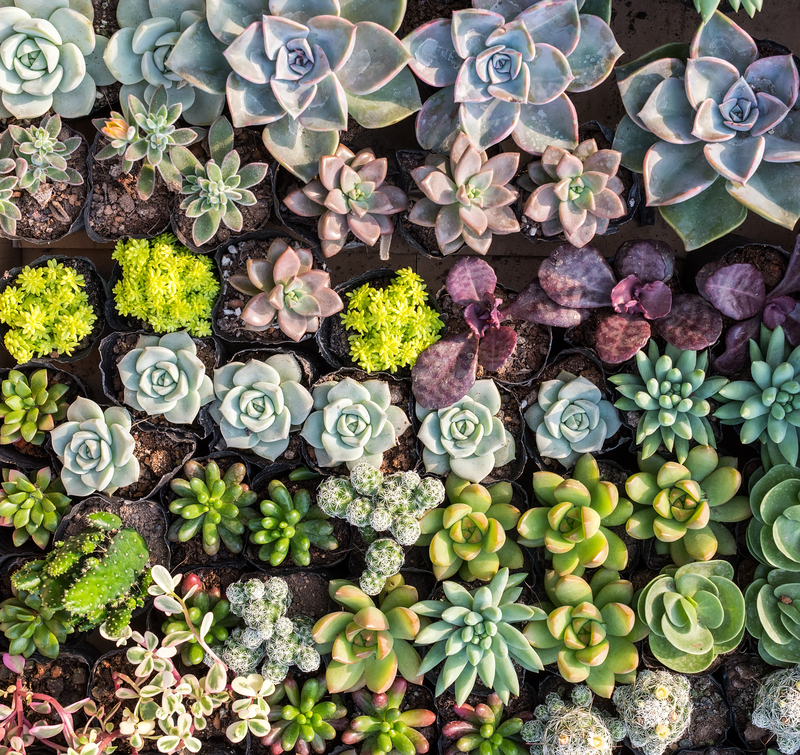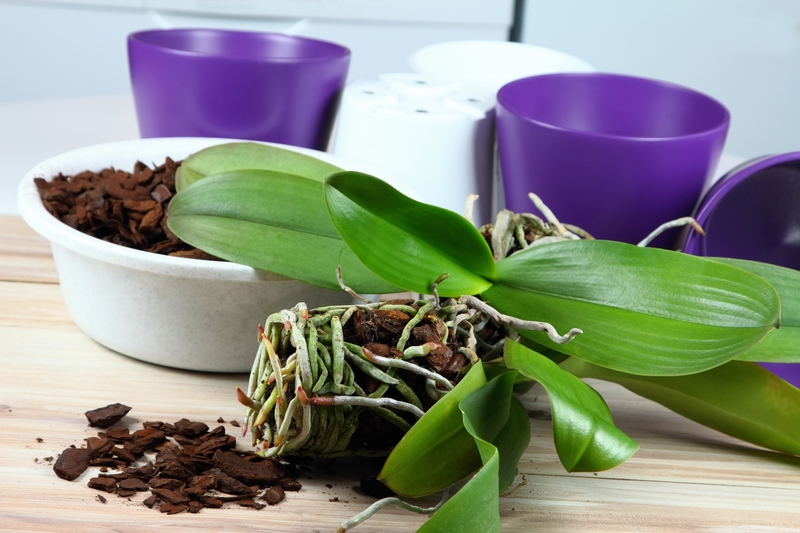Elevate Your Gardening Skills with 3 Weed Tips
Posted on 30/08/2025
Elevate Your Gardening Skills with 3 Weed Tips
Every gardener, from seasoned experts to enthusiastic beginners, faces a common adversary: weeds. These persistent invaders compete with your prized plants for vital resources like water, sunlight, and nutrients. An effective weed management strategy can truly elevate your gardening skills to new heights. In this comprehensive guide, discover the top three weed control tips that will help you cultivate a thriving, beautiful, and weed-free garden all year round.

Why Weed Control is Essential for Successful Gardening
Before diving into the practical steps, it's important to understand why effective weed management is so crucial. Weeds are more than just unsightly--they can choke out desirable plants, disrupt garden aesthetics, and introduce disease or pests. By learning how to control garden weeds with skill and precision, you set the stage for healthier, more productive plants.
- Improved Plant Growth: Weeds compete directly with your plants, often winning in the battle for vital nutrients.
- Pest and Disease Control: Some weeds act as hosts for pests and plant diseases, making vigilance essential.
- Garden Aesthetics: A well-managed, weed-free space improves property value and visual appeal.
If you're ready to move beyond the basics, these proven weed control tips will help you master the art and science of gardening like never before.
Tip 1: Mulch Mastery--Smother Weeds Before They Start
Why Mulching Is Your First Line of Defense
One of the most effective ways to prevent weeds in the garden is to apply mulch. Mulching not only blocks sunlight--preventing weed seeds from germinating--but also retains soil moisture, moderates soil temperature, and adds organic matter as it breaks down. When used correctly, mulch becomes your garden's protective shield against unwanted invaders.
How to Mulch Like a Pro
- Choose the Right Mulch: Organic mulches like straw, wood chips, bark, shredded leaves, or compost are ideal for most garden beds. Inorganic mulches, such as landscape fabric or gravel, work well in pathways and non-planting areas.
- Apply the Correct Thickness: For maximum weed suppression, apply a layer of mulch about 2-4 inches thick. Too little mulch won't smother weed seeds, while too much can hinder water and air movement.
- Maintain Your Mulch: Replenish mulch at least once a year or as needed, especially after heavy rain or decomposition. Always clear away old, matted mulch to refresh the surface and promote healthy air flow.
- Keep Mulch Away from Stems: To prevent rot and pests, keep mulch a few inches away from the stems or trunks of your plants.
Pro Tip: Apply mulch right after weeding and before the weed seeds have a chance to re-seed. This action multiplies your weed control efforts!
Tip 2: Smart Weeding Strategies--Weed Early, Weed Often
Timing Is Everything in Weed Removal
The real secret to elevating your gardening skills lies in consistent, targeted weeding. As weeds grow, they quickly become harder to remove and cause more havoc in your flower beds and vegetable patches. By acting early and being diligent, you ensure your efforts pay dividends throughout the growing season.
Best Practices for Effective Weed Removal
- Weed After Rain: Pulling weeds is much easier when the soil is moist--roots are less likely to break off, making the removal more effective.
- Use the Right Tools: Equip yourself with a hand fork, hoe, or specialized weed puller. These tools can help you uproot weeds efficiently, especially those with deep taproots like dandelions.
- Get to the Root: Always aim to pull out the entire weed, including the root, to prevent regrowth. For perennial weeds, this is particularly important since they often regenerate from root fragments left behind.
- Regular Walk-Throughs: Make it a habit to walk through your garden weekly and pull any newcomers--never let weeds go to seed!
- Target Young Weeds: Removing weeds when they're small and tender requires less work and is more effective than tackling mature weeds.
Remember: A little effort invested regularly in weeding can save you much more work in the future. This is a key step to maintaining a flourishing, weed-free garden all year long.
Tip 3: Encourage Healthy Plant Crowds to Outcompete Weeds
Dense Planting for Weed Suppression
A strategic planting plan can elevate your garden's ability to prevent weed growth. By filling your beds with robust, healthy plants that crowd out invaders, you'll create an environment where weeds find it difficult to establish themselves.
Techniques for Plant-Dense Garden Beds
- Follow Recommended Plant Spacing: While overcrowding should be avoided, closely spaced plants provide a living mulch, shading the soil and making it tough for weeds to take hold.
- Interplanting and Companion Planting: Use a mix of groundcovers, perennials, and annuals. Grow low-spreading plants like creeping thyme or sweet alyssum between taller crops to interrupt weed space.
- Choose Vigorous Growers: Select varieties known for rapid establishment and dense foliage, especially for borders and open garden areas.
- Rotate Crops: Practice crop rotation and succession planting to disrupt weed life cycles and keep your beds vibrant and productive.
Planting densely not only enhances your garden's resilience but also reduces the amount of bare soil exposed to weed seeds, making your garden less hospitable to weeds overall.
Bonus Tips to Take Your Weed Management to the Next Level
Alongside these three core weed management strategies, there are additional tactics that can positively impact your overall weed control:
- Solarization: Use clear plastic to heat up the soil and kill weed seeds before planting--ideal for new beds or heavy infestations.
- Hand Pulling After Watering: Tackle persistent weeds by hand after irrigation when roots are loose for easy removal.
- Install Edging: Physical barriers at garden borders stop invasive grasses and weeds from creeping into your beds.
- Practice Cleanliness: Regularly clean your tools and footwear to prevent introducing weed seeds from other areas.
- Compost with Caution: Avoid adding weedy plants that have gone to seed to compost piles, as seeds can survive most home composting temperatures.

Avoiding Common Weed Control Mistakes
Mistake 1: Ignoring the Problem
Ignoring emerging weeds lets them mature, seed, and multiply. Early intervention is always easier and more effective.
Mistake 2: Using Herbicides Without Caution
Chemical weed killers can harm desirable plants, beneficial insects, and the environment if misused. Always follow label instructions and consider organic alternatives whenever possible.
Mistake 3: Over-Cultivating
Excessive tilling can bring buried weed seeds to the surface where they can germinate, sometimes making the problem worse. Employ minimal or no-till techniques to minimize soil disturbance.
Conclusion: Cultivate a Thriving, Weed-Free Garden with Pro Strategies
Elevating your gardening skills with effective weed control is more than a chore--it's an investment in the health, beauty, and productivity of your outdoor sanctuary. By mastering mulching, developing a regular weeding routine, and using strategic planting to outcompete weeds, you'll set your garden up for season-long success.
Remember, the battle against weeds is ongoing, but with these proven tips and a little diligence, you'll reap the rewards of lush, bountiful beds and brilliant blooms. Make these weed management strategies part of your regular garden care and watch as your gardening prowess--and enjoyment--soars!
Quick Recap: 3 Weed Control Tips for Gardening Success
- Embrace Mulching: Suppress weeds, conserve water, and improve soil.
- Weed Wisely and Regularly: Act early and often for best results.
- Plant Densely: Fill beds to crowd out potential weeds.
Looking for more ways to elevate your gardening skills and manage weeds? Stay tuned for expert guides, or share your favorite weed-fighting tip below! Happy gardening!

